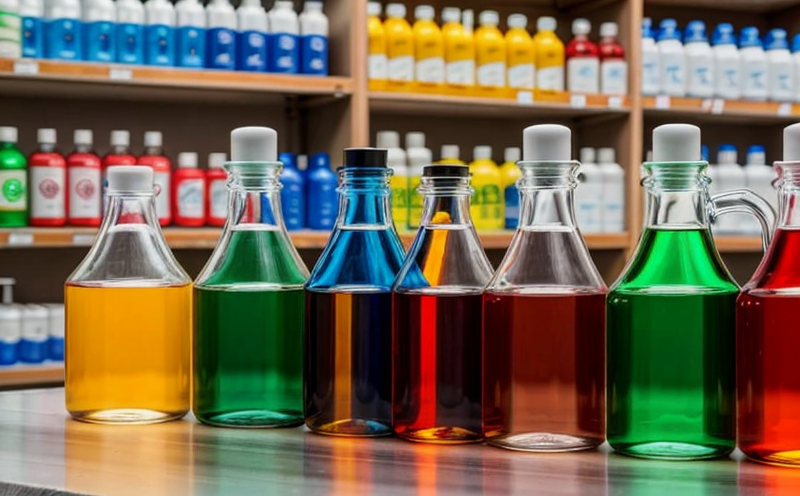EPA 8081 Detection of organochlorine pesticides in textiles
The EPA Method 8081 is a widely recognized standard for detecting organochlorine pesticides (OCPs) in environmental and biological samples. In the context of textile testing, this method ensures that products meet regulatory thresholds regarding pesticide residues, safeguarding both human health and the environment.
Organochlorines were once commonly used as insecticides due to their potent pesticidal effects; however, many have been banned or restricted due to significant environmental and health risks. OCPs can accumulate in various materials over time, posing potential hazards if not properly managed. Textile manufacturers must adhere to stringent regulations such as the EPA Method 8081 to ensure compliance.
The primary objective of using EPA 8081 is to quantify OCPs like DDT, dieldrin, and endosulfan in textiles. This method not only helps manufacturers stay compliant but also allows them to demonstrate their commitment to sustainable practices by providing transparency about the chemical composition of their products.
Our laboratory adheres strictly to this methodology, ensuring accurate results that are reliable and repeatable. By leveraging state-of-the-art equipment and experienced personnel, we offer a robust service tailored specifically for textile manufacturers seeking to meet stringent regulatory standards.
| Sample Preparation | Extraction Process | Detection Method |
|---|---|---|
| Cleanse and air-dry the sample fabric. | Use Soxhlet extraction with dichloromethane. | GC-MS/MS for quantification. |
The process begins by thoroughly cleansing and drying the textile samples. These are then subjected to a Soxhlet extraction technique using dichloromethane, which effectively extracts OCPs from the fabric matrix. Following extraction, gas chromatography-mass spectrometry (GC-MS/MS) is employed for precise quantification of detected pesticides.
This comprehensive approach ensures that even minute traces of OCPs are identified and reported accurately, aligning with global regulatory requirements such as the EPA Method 8081.
Our expertise lies in delivering consistent, high-quality results that are crucial for maintaining brand reputation and consumer trust. With rigorous adherence to international standards like ISO 9001:2015, our laboratory maintains the highest levels of accuracy and precision.
Scope and Methodology
- Sample Preparation: Cleanse and air-dry textile samples.
- Extraction: Use Soxhlet extraction with dichloromethane.
- Detection: Employ GC-MS/MS for quantification.
The scope of EPA 8081 extends beyond mere detection—it encompasses the entire lifecycle assessment of textiles, ensuring that every stage from raw material sourcing to final product release adheres to strict regulatory guidelines. This methodical approach guarantees that manufacturers can confidently meet all necessary compliance requirements while maintaining a high standard of quality.
Our laboratory strictly follows the EPA Method 8081, which includes detailed protocols for sample preparation, extraction procedures, and final analysis. These steps are meticulously documented to ensure transparency and repeatability of results.
By employing this standardized methodology, we provide clients with reliable data that can be used to make informed decisions regarding product development and quality control. The rigorous nature of EPA 8081 ensures that only compliant textiles reach the market, thereby protecting both consumers and the environment from harmful OCP exposure.
Why Choose This Test
- Compliance with Regulations: Ensures adherence to strict regulatory standards.
- Rigorous Methodology: Utilizes proven techniques and equipment for accurate results.
- Expert Personnel: Trained professionals ensure consistent quality.
- Reliable Results: Accurate quantification of OCPs in textiles.
Selecting EPA 8081 for your textile testing needs offers numerous advantages. Firstly, it guarantees compliance with stringent regulatory requirements set forth by agencies like the EPA and international standards such as ISO 9001:2015. Secondly, our laboratory employs a rigorous methodology that utilizes advanced techniques and reliable equipment to provide accurate quantification of OCPs within textile samples.
The expertise of our team plays a crucial role in ensuring consistent quality across all tests conducted using EPA 8081. We pride ourselves on delivering precise results consistently, which are essential for maintaining brand reputation and consumer trust. By choosing this test, you not only ensure regulatory compliance but also contribute to the overall health and safety of your customers.
The comprehensive nature of EPA 8081 allows textile manufacturers to conduct thorough assessments throughout their supply chain, from raw material selection through finished product evaluation. This holistic approach ensures that all stages of production meet stringent quality control measures, ultimately leading to safer products for end-users.
Customer Impact and Satisfaction
The implementation of EPA 8081 in textile testing significantly impacts customers by ensuring they receive high-quality, compliant products. For quality managers and compliance officers responsible for overseeing production processes, this method provides peace of mind knowing that all textiles are rigorously tested against regulatory standards.
R&D engineers benefit from the detailed insights provided by EPA 8081, allowing them to innovate without compromising safety or sustainability goals. Procurement professionals can leverage accurate test results when selecting suppliers and raw materials, ensuring a consistent standard across their operations.
Our customers appreciate not only the compliance aspect but also the reliability of our testing services. By adhering strictly to EPA 8081, we consistently deliver precise and repeatable results that meet or exceed client expectations. This commitment translates into increased customer satisfaction and loyalty, as well as enhanced brand reputation.
Moreover, by staying ahead of regulatory changes through continuous improvement and adherence to best practices like ISO 9001:2015, we ensure our services remain relevant and effective in supporting your business needs. Our goal is to help you achieve your objectives while minimizing risks associated with non-compliance or substandard products.





